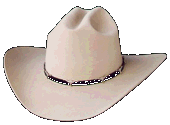Saturday, March 03, 2007
Life on Earth - Episode 03 - The First Forests
"This third episode examines the earliest land vegetation and insects. The first plants, being devoid of stems, mainly comprised mosses and liverworts. Using both sexual and asexual methods of reproduction, they proliferated. Descended from segmented sea creatures, millipedes were among the first to take advantage of such a habitat and were quickly followed by other species. Without water to carry eggs, bodily contact between the sexes was now necessary. This was problematical for some hunters, such as spiders and scorpions, who developed courtship rituals to ensure that that the female didn't eat the male. Over time, the plants' cell walls strengthened and they grew taller. Ferns and horsetails were among the first such species. Insects then evolved wings to avoid climbing and the dragonfly (which once had a wingspan of 60 centimetres) is one of the most successful. The elaborate wingbeats of the damselfly are shown slowed down 120 times. Some plants, like the cycad enlisted the insects to transport pollen, while others, like the conifer, spread spores. Over a third of forests contain conifers and the giant sequoia of California is the largest living organism of any kind: it grows to a height of 112 metres. The conifer secretes resin to repair its trunk, and this survives as amber. Within it, insect specimens have been found that are 200 million years old. In fact, at this time, every insect known today was already in existence."
Subscribe to:
Post Comments (Atom)












No comments:
Post a Comment